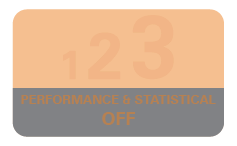Custom Duty in India
The Custom Duty is imposed on the import and export of the goods in India. Section 12 of the Customs Act, 1962 defines the charge ability of customs duty.
The Customs Act 1962 formulates the laws relating to Indian custom duty for prevention of illegal import and export of goods. The two main reasons for imposing custom duty are to protect domestic industries and keep imports to the minimum. Custom duty is levied on the goods imported or exported from India. Section 12 of the Customs Act, 1962 is the Charging section. The Customs Tariff Act 1975 (CTA) specifies the custom duty rates. All the policies relating to custom duty such as levy, procedures, evasion, penalties, etc. are prepared by the Central Board of Excise and Customs (CBEC). Import duty is imposed on the goods imported, and export duty is imposed on the goods shipped.
Division of Goods and the Rates of Duty
The classification of goods and the rate of Custom Duty are provided in the First and Second Schedule of Customs Tariff Act, 1975.
The first Schedule is known as the Import tariff as the list of goods chargeable with import duty is mentioned.
The second Schedule is known as the Export Tariff containing the list of goods chargeable with export duty.
Custom duty rates and types
Note:
- *Basic rates of Customs duty can vary. For instance, the basic duty imposed on baggage is @ 35%.
- Education Cess (EC) and Secondary and Higher Education Cess (SHEC) @ 2% and 1% respectively.
- CVD is referred to the Countervailing Duty.
Taxable Event in case of Customs
The Custom duty can be imposed when the following essential events take place-
- The duty is levied on the goods.
- Import into India or export from India must happen.
- The Customs Tariff Act, 1975 should specify the rate of custom duty imposed.
- Government goods and Non-Government goods are treated at par.
In case of importation-
When the goods enter the customs barrier, and the form of bill of entry is filled, it is said that taxable event has occurred. The date that will be considered for rate of duty and valuation of the goods will be as under:
- If the imported goods are for consumption in India, the date on which the bill of entry is presented or the date on which the vessel or the aircraft has entered, whichever is later.
- In case the goods were kept in the warehouse, then the date of presenting the Ex-bond bill of entry for clearing the goods for home consumption.
In the event of exportation-
The exportation starts once the shipping bill is filed. However, the completion of a taxable event takes place once the goods cross the Indian territorial waters.
Valuation of Custom Duty
Valuation of Imported Goods-
Customs duties can be calculated in two ways- specific or ad valorem, meaning on the value of goods. The value of goods is ascertained by the provisions of Section 14 of the Customs Act, 1962 read with Customs Valuation (Determination of Value of Imported Goods) Rules, 2007. Rule 3 adjusted according to the provisions of Rule 10 provide the value of goods known as Transaction Value.
If the value of goods is not clearly identified, then valuation is done by following sequentially the under mentioned rules:
- Rule 4: Transaction value of Identical goods;
- Rule 5: Transaction value of Similar goods;
- Rule 7: Deductive Value;
- Rule 8: Computed Value;
- Rule 9: Residual Method.
Note: Adjustments by Rule 10(2) of the said rules needs to be done in all valuation methods (Rule 4 to 9).
Valuation of Exported Goods-
The Rule 3 of the Customs (Determination of Value of Export Goods) Rules 2007, states that the transaction value will be the value of the exported goods. This is subject to the provisions of Rule 8, i.e., the right of the proper officer to reject the transaction value ascertained. In case the transaction value is not determined, then the value will be determined through the Rules 4 to 6 followed sequentially.
- Rule 4: Transaction value by Comparison;
- Rule 5: Computed Value;
- Rule 6: Residual Value.
Note: For calculating the export duty, the FOB price of the exported goods is considered to be the transaction value. The export duty is levied as a percentage of FOB price.
SCROLL TO TOP














